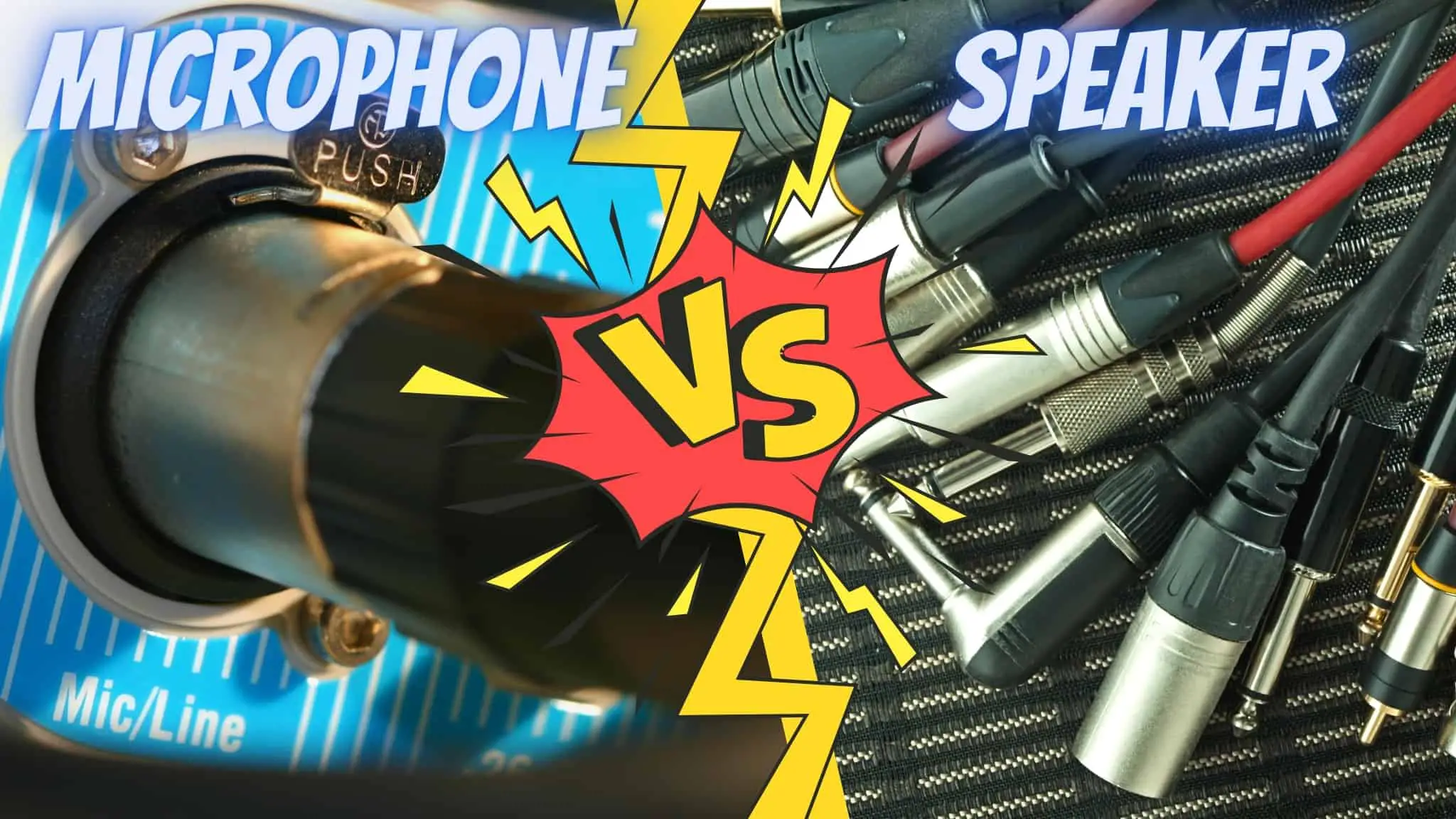You’ve got your new speakers, but you’ve also got a mic cable lying around.
You’re wondering if you can hook up the speakers with the microphone cable?
After all, these two types of cables look similar.

Mic cables and powered speakers both have one thing in common: an XLR input. So, if you have powered speakers, you can use the mic cable to hook up speakers. But, this is an exception to the rule – in general, never use mic cables to connect speakers to an amp.
XLR microphone cables carry low voltage as well as low impedance audio signals over two cores and a shield. A speaker cable, on the other hand, uses two heavy-duty cores that are much thicker. The danger of using a mic cable to connect your speakers is the potential damage to the speakers, the amplifier, and most definitely the wires.
It’s important to keep in mind that mic and speaker cables aren’t the same because they are designed to carry different voltages and cores.
I’m going to explain why you shouldn’t use your mic XLR cable for your speakers.
Modern speakers don’t use XLR connectors anymore, so you should NEVER use the mic cable for your speaker, or you risk damaging them!
Let me get into the details and shed some light on what cables you must use.
Can You Use a Mic Cable to Hook Up Speakers?
Both mic and powered speaker cables are called XLR cables – based on the XLR type connector or input.
This XLR cable is no longer popular with modern speakers.
If you have powered speakers, as long as both your speaker and mic have an XLR input, you can plug in your speaker with a mic cable and get a decent sound, but I don’t recommend you do that.
Instead, you should use cables with either pin connectors, spade lugs, or banana plugs for new speakers, depending on the model.
The issue is that the anatomy of the wires is different because they have a differing wire gauge. Therefore, not all cables perform in quite the same way.
If you need to run a high wattage through your amplifier for your speaker, a thin XLR cable won’t be able to handle it.
Differences between Mic and Speaker Cables
There is an essential difference between mic and speaker cables.
First, regular mic XLR cables carry low voltage as well as low impedance audio signals over two cores and a shield.
The speaker cable, on the other hand, uses two heavy-duty cores that are much thicker.
The danger of using a mic cable to connect your speakers is the potential damage to the speakers, the amplifier, and most definitely the wires.
Mic Cables
When you hear the term mic cable, it refers to a balanced audio cable. It’s a type of thin cable with a gauge between 18 to 24.
The cable is made of two-conductor wires (positive and negative) and a shielded ground wire.
It is fitted with three-pin XLR connectors, which contributes to the component interconnection.
Speaker Cables
The speaker cable is the electrical connection between a speaker and the amplifier.
A key feature is that a speaker cable requires high power and low impedance. Therefore, the wire must be thick, between 12 to 14 gauges.
The modern speaker cable is built differently than old XLR cables. This cable has unshielded positive and negative conductors.
The connectors allow you to hook up the amplifier speaker output with your speaker input jacks.
These input jacks come in three main types:
- Banana plugs: they are thick in the middle and fit into the binding post tightly
- Spade lugs: they have a U-shape and fit into a five-way binding post.
- Pin connectors: they have a straight or an angled shape.
If you have older speaker models, you can still use an XLR connector to connect microphones and line-level audio equipment.
But, it’s no longer the preferred connector for the latest speaker tech.
Also read: Microphone vs. Line In | The Difference Between Mic Level and Line Level Explained.
What Cables to Use for Powered Speakers?
You should not connect powered speakers to other audio devices with unshielded cables because this causes a humming noise and radio interference buzzing.
This is extremely distracting and ruins the audio quality of the music.
Instead, if you have low-impedance speakers with a high power application, and you have a long wire run, use 12 or 14 gauge, like the InstallGear, or Crutchfield speaker wire.
If you need a short wire connection, use a 16 gauge wire, like the KabelDirect copper wire.
Read next: Microphone Gain vs Volume | Here’s How it Works.
I'm Joost Nusselder, the founder of Neaera and a content marketer, dad, and love trying out new equipment with guitar at the heart of my passion, and together with my team, I've been creating in-depth blog articles since 2020 to help loyal readers with recording and guitar tips.

